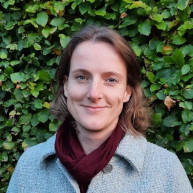Else Starkenburg wordt nieuw lid De Jonge Akademie 2022
De Jonge Akademie krijgt er tien nieuwe leden bij! Het zijn onderzoekers uit verschillende disciplines die zich wetenschappelijk hebben bewezen en minder dan tien jaar geleden zijn gepromoveerd. Ze doen onderzoek naar onderwerpen als het mensbeeld van de oude Grieken, de rol van AI in ontwikkelingsvraagstukken, de ‘archeologie’ van ons sterrenstelsel en hoe je een kunstmatige wiskundeleraar kunt maken.
Zij worden officieel als lid geïnstalleerd op 22 maart 2022. Tijdens hun vijfjarige lidmaatschap maken ze zich sterk voor projecten op het gebied van wetenschapsbeleid, interdisciplinariteit, wetenschap en maatschappij en internationalisering.

Eén van de nieuwe leden is Else Starkenburg (sterrenkunde, Rijksuniversiteit Groningen)
Als ‘Melkwegarcheoloog’ onderzoekt sterrenkundige Else Starkenburg de vroege geschiedenis van ons sterrenstelsel via de oudste generaties sterren. Ze richtte hiertoe de Pristine Survey op, een internationaal team dat de oudste sterren en structuren in de Melkweg bestudeert. Starkenburg speelt bovendien een leidende rol bij het toepassen van nieuwe instrumentatie, waarmee we op een zeer efficiënte manier veel meer te weten kunnen komen over miljoenen sterren in de Melkweg. Binnen De Jonge Akademie wil ze zich hardmaken voor postdoctorale wetenschappers met een tijdelijk contract, een groep die in wetenschapsbeleid vaak tussen wal en schip valt. Ze pleit voor een meer inclusieve en bredere aanpak waardoor er minder talent verloren zal gaan.
Meer nieuws
-
19 december 2025
Mariano Méndez ontvangt Argentijnse RAÍCES-prijs
-
18 december 2025
Waarom innoveren, en voor wie?
-
17 december 2025
Ben Feringa wint Feynmanprijs
